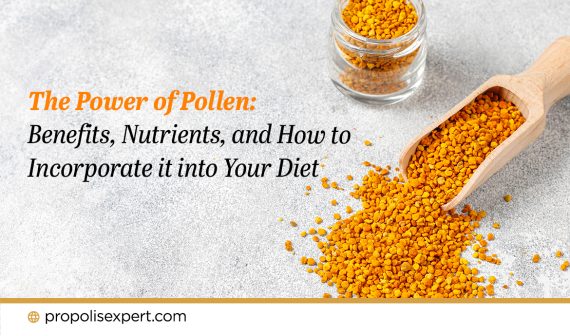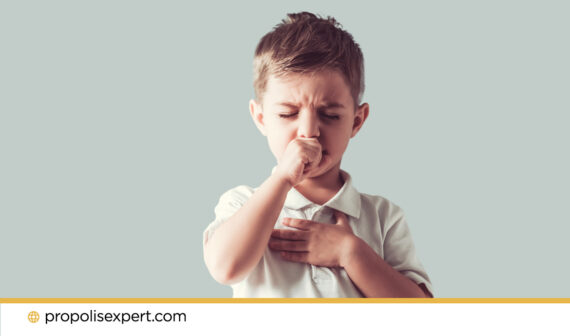Bee pollen, a precious substance collected by diligent worker bees during their pollination journeys, holds a unique place in the realm of nutrition. As these busy bees visit flowers, they not only promote pollination but also gather nutrient-rich resources that have the potential to benefit us as well. In this blog post, we’ll explore the fascinating world of bee pollen, its nutrient profile, and creative ways to incorporate it into your diet for improved health.
The Nutrient Profile of Pollen: A Rich Source of Protein, Vitamins, and Minerals
Bee pollen is genuinely a nutritional treasure. During their foraging missions, bees accumulate pollen on their bodies, effectively participating in the vital plant pollination process. Simultaneously, they bring back this nutrient-rich treasure to their hives, potentially nourishing the hive’s inhabitants and us. In just one foraging trip, a single bee can gather an astonishing 15-45 mg of pollen, a significant fraction of their body weight. The yearly pollen production of a colony can vary, influenced by factors like colony size and environmental conditions, such as climate and local flora. This precious pollen, stored within the hive, is meticulously preserved with a touch of honey to maintain its vitality.
The nutritional composition of bee pollen can vary depending on the geographic region where it’s collected. While there’s no precise standard for its nutritional content, it typically consists of approximately 4-15% water, 7.5-40% protein, 1.3-7% lipids, and 1-3.5% vitamins and minerals. Beyond its nutritional richness, bee pollen is renowned for its remarkable biological activity, making it a prized addition to any diet.
A scientific study conducted in 2014 investigated the effect of regular pollen consumption on muscle development in individuals experiencing muscle loss due to inadequate nutrient intake. Participants’ diets were supplemented with pollen at 5% and 10% levels for three weeks, and the muscle mass values of the participants at the beginning and end of the three weeks were compared. The study revealed that regular pollen consumption improved muscle mass. Researchers noted that besides being rich in vitamins and minerals, adding pollen to a standard diet is beneficial.
Creative Ways to Use Pollen in Your Diet for Improved Health
Incorporating bee pollen into your daily nutrition regimen is both easy and delightful. Children are recommended to consume 1-2 teaspoons of bee pollen per day, while adults can savor 2-4 teaspoons daily. There are various creative ways to enjoy bee pollen, allowing you to tailor your consumption according to your preferences.
Directly: You can enjoy bee pollen as is, enjoying its unique flavor and nutritional benefits.
Mixing with Liquids: Bee pollen blends harmoniously with various liquids such as milk, water, fruit juice, and yogurt. You can create delicious and nutritious beverages by simply adding bee pollen to your favorite drinks.
Pairing with Honey: Combining bee pollen with honey not only enhances its taste but also offers a delightful combination of natural goodness.
Tablet Form: For your convenience, bee pollen is available in tablet form. These tablets often come combined with the incredible benefits of propolis and royal jelly, providing you with a comprehensive nutritional boost.
In conclusion, bee pollen is a natural jewel of many nutrients and biological activity. By incorporating it into your daily diet creatively, you can tap into its potential to enhance your health and well-being. Whether you savor it directly, mix it with your favorite liquids, or opt for convenient tablet forms, bee pollen can be your hearty food for a healthier and more vibrant life.
Source: Salles, Jérôme, et al. “Bee pollen improves muscle protein and energy metabolism in malnourished old rats through interfering with the mTOR signaling pathway and mitochondrial activity.” Nutrients 6.12 (2014): 5500-5516.






